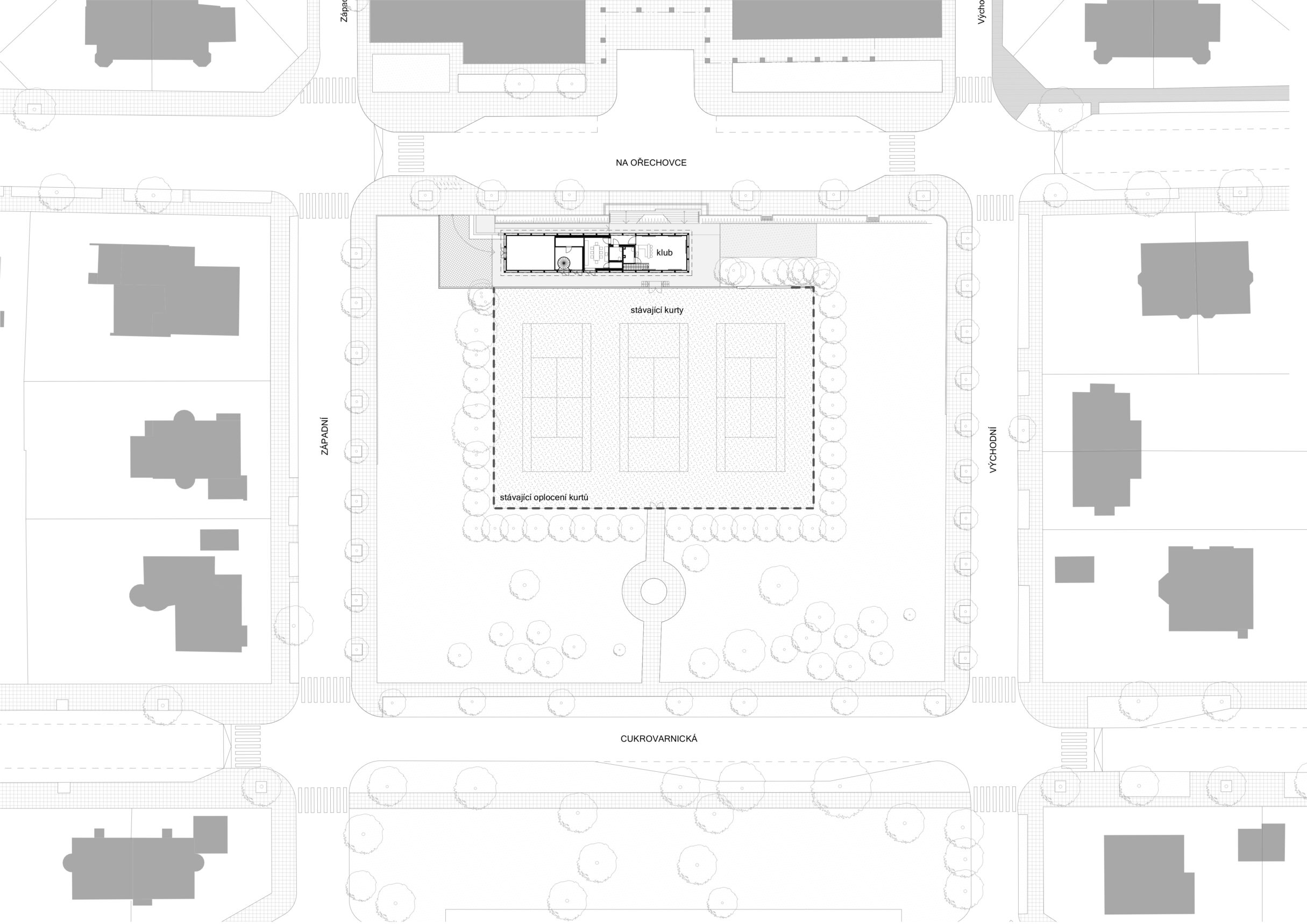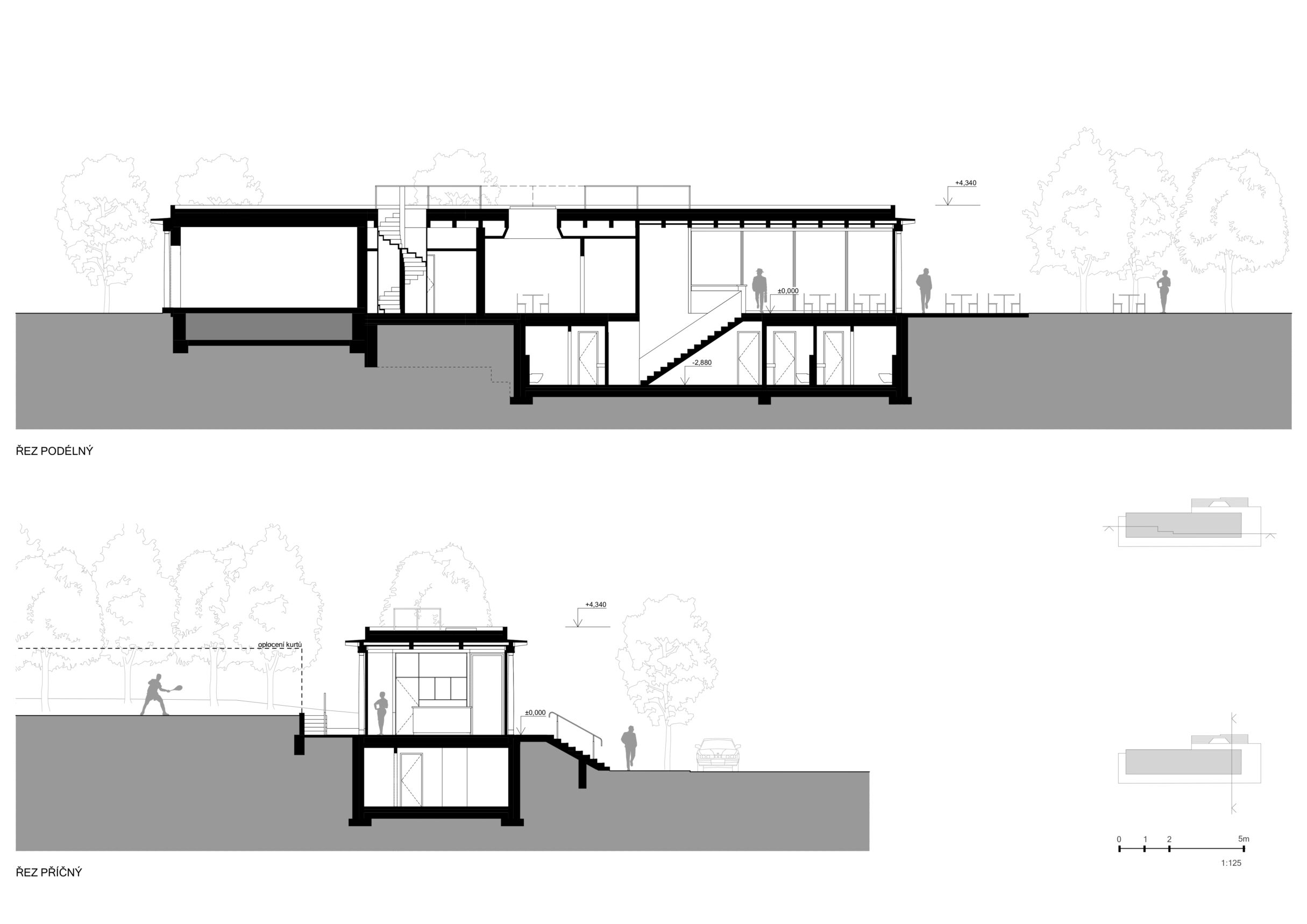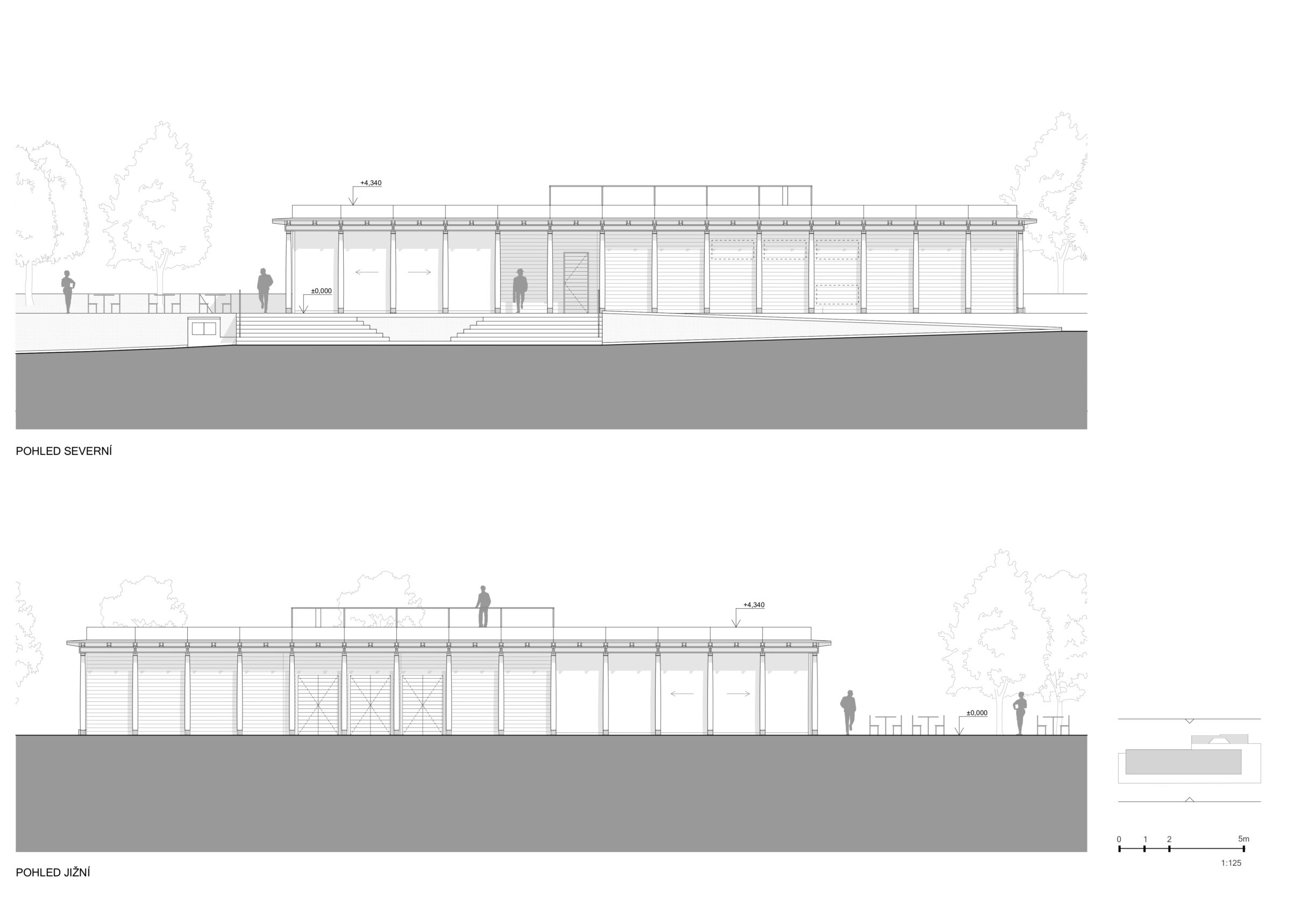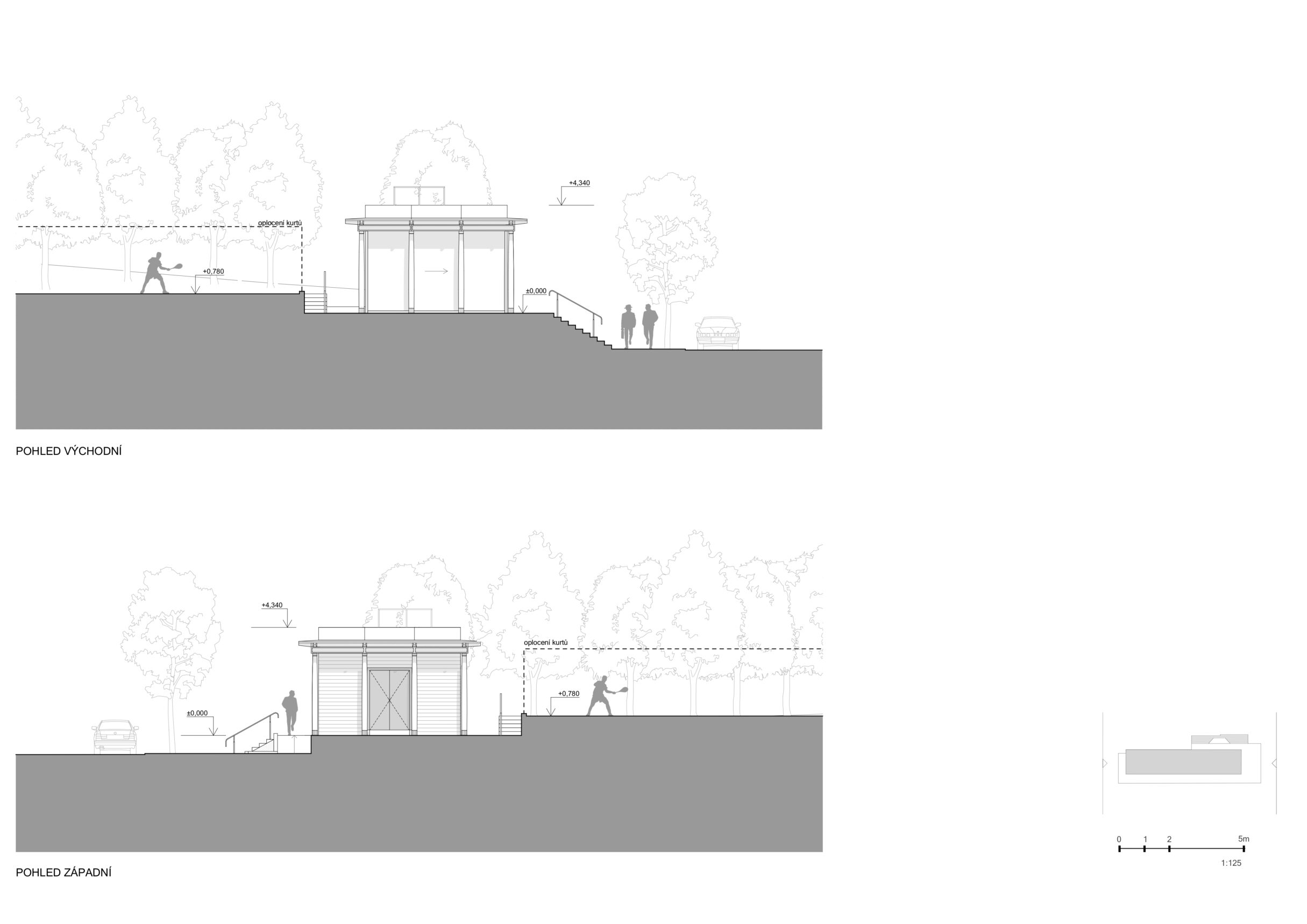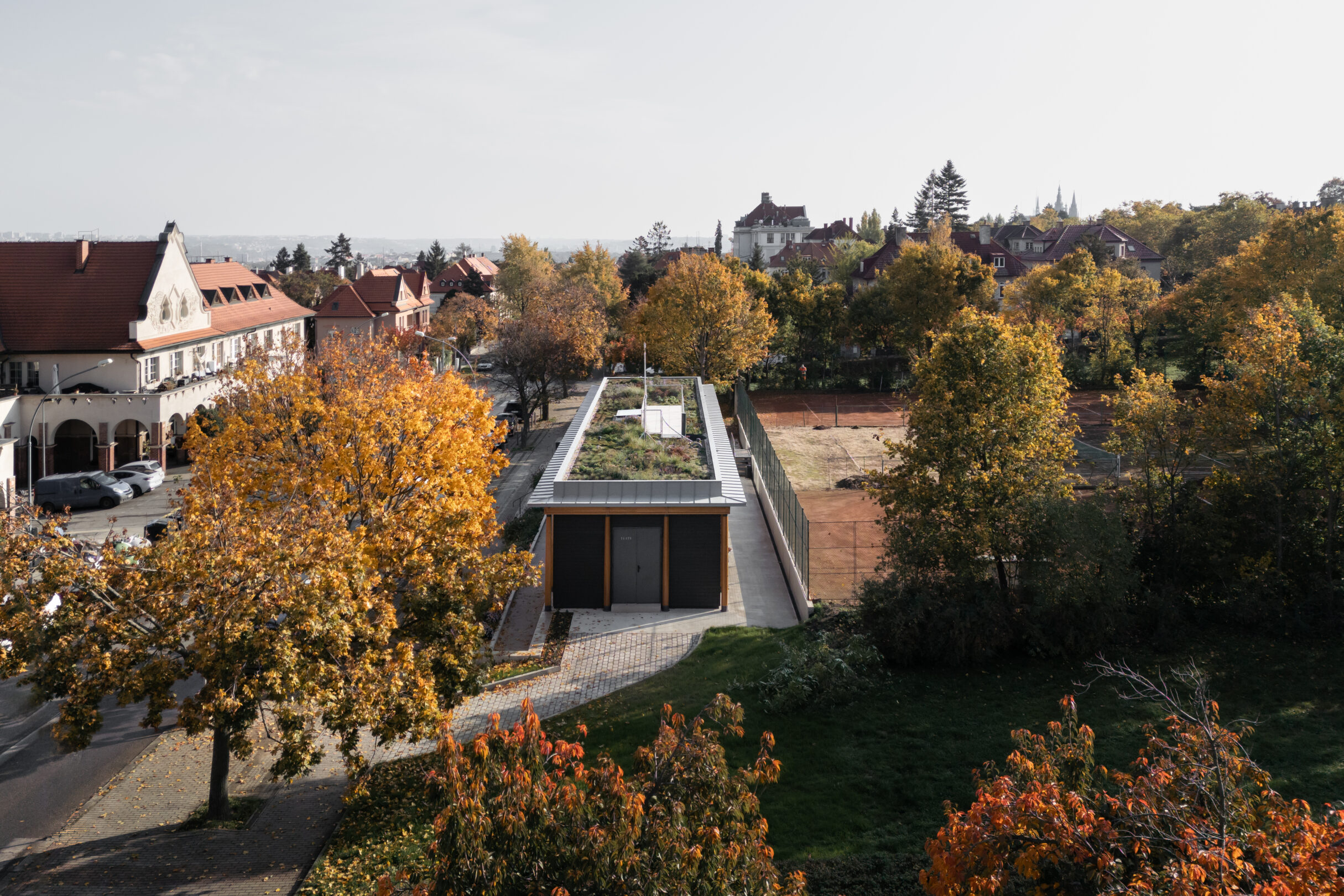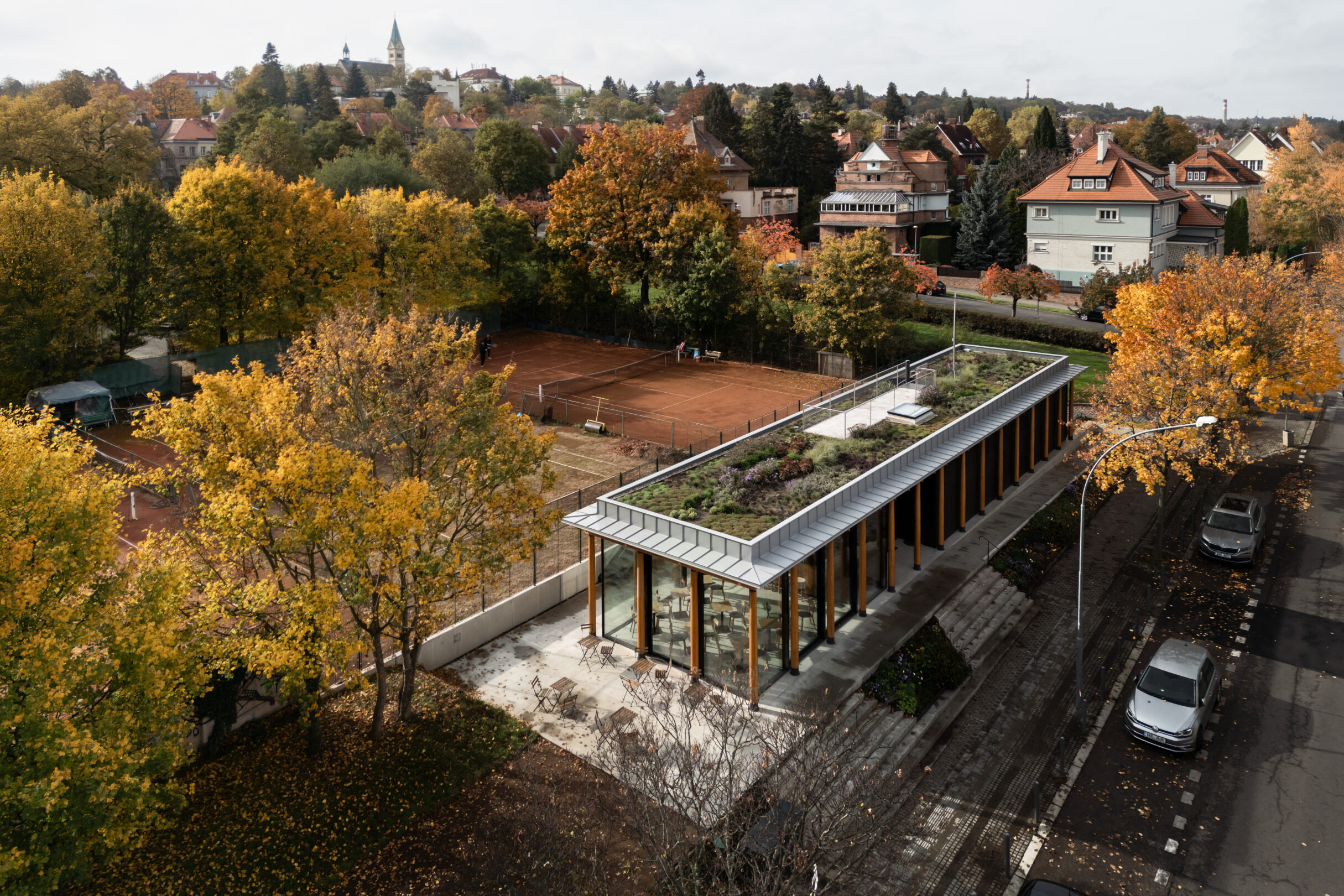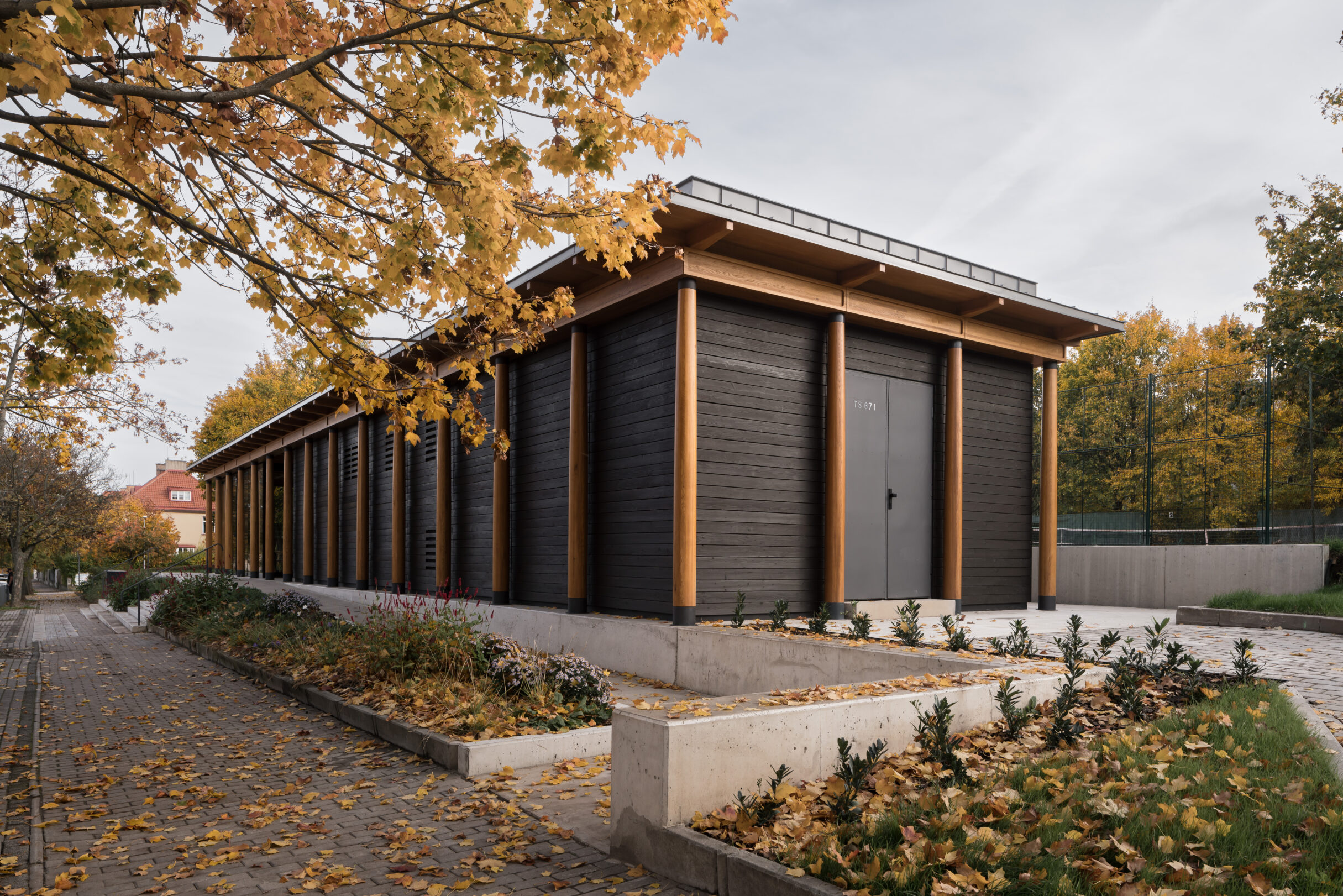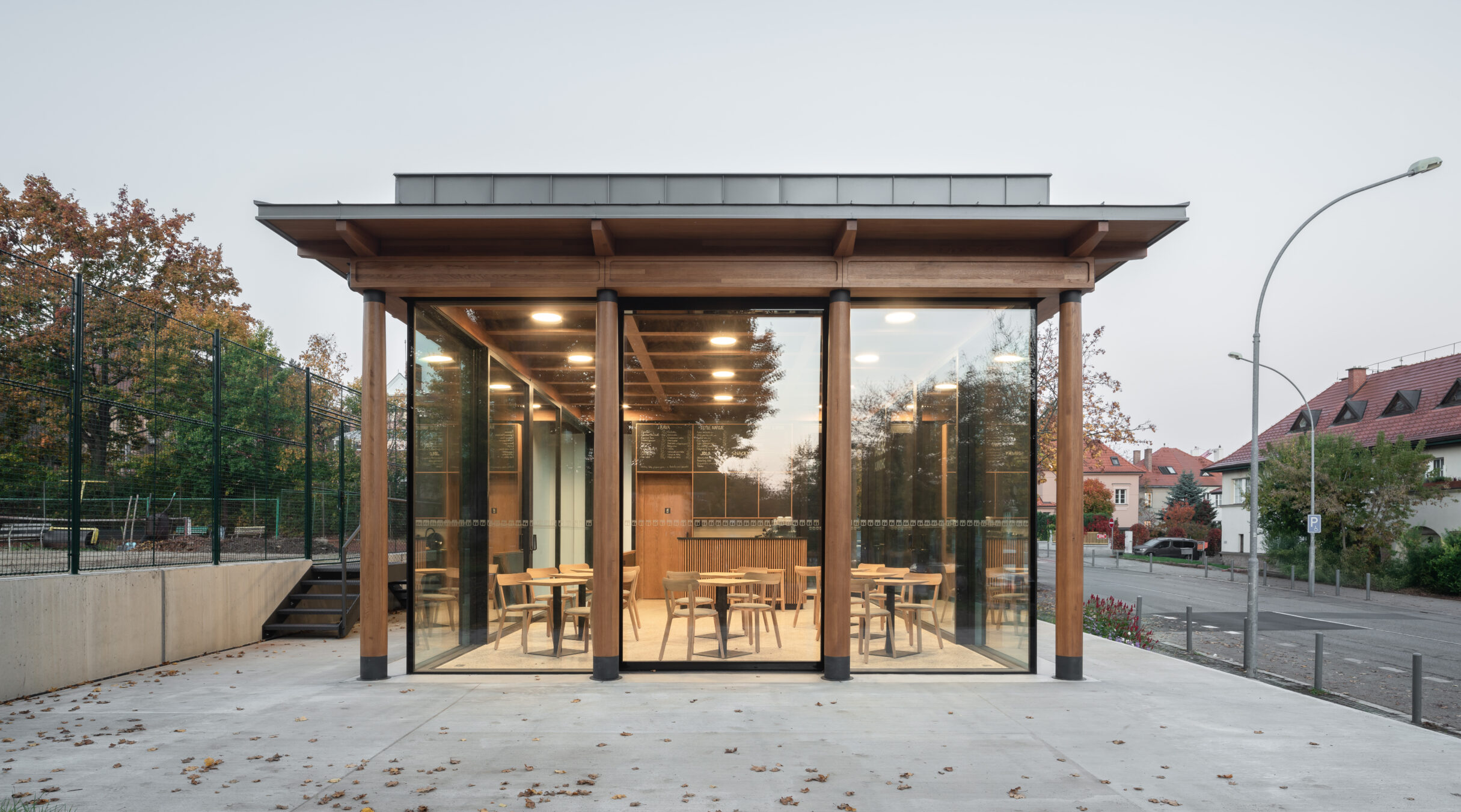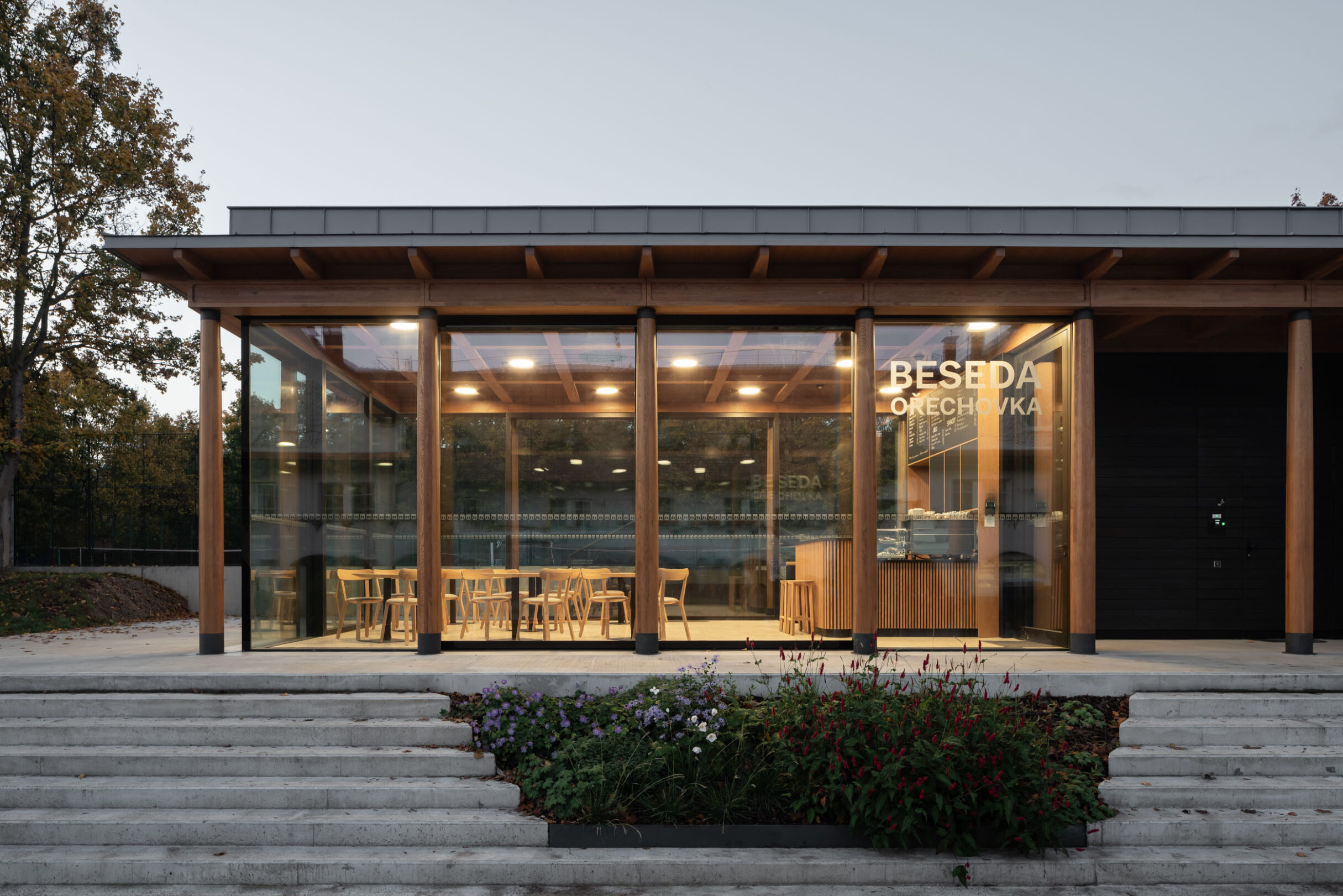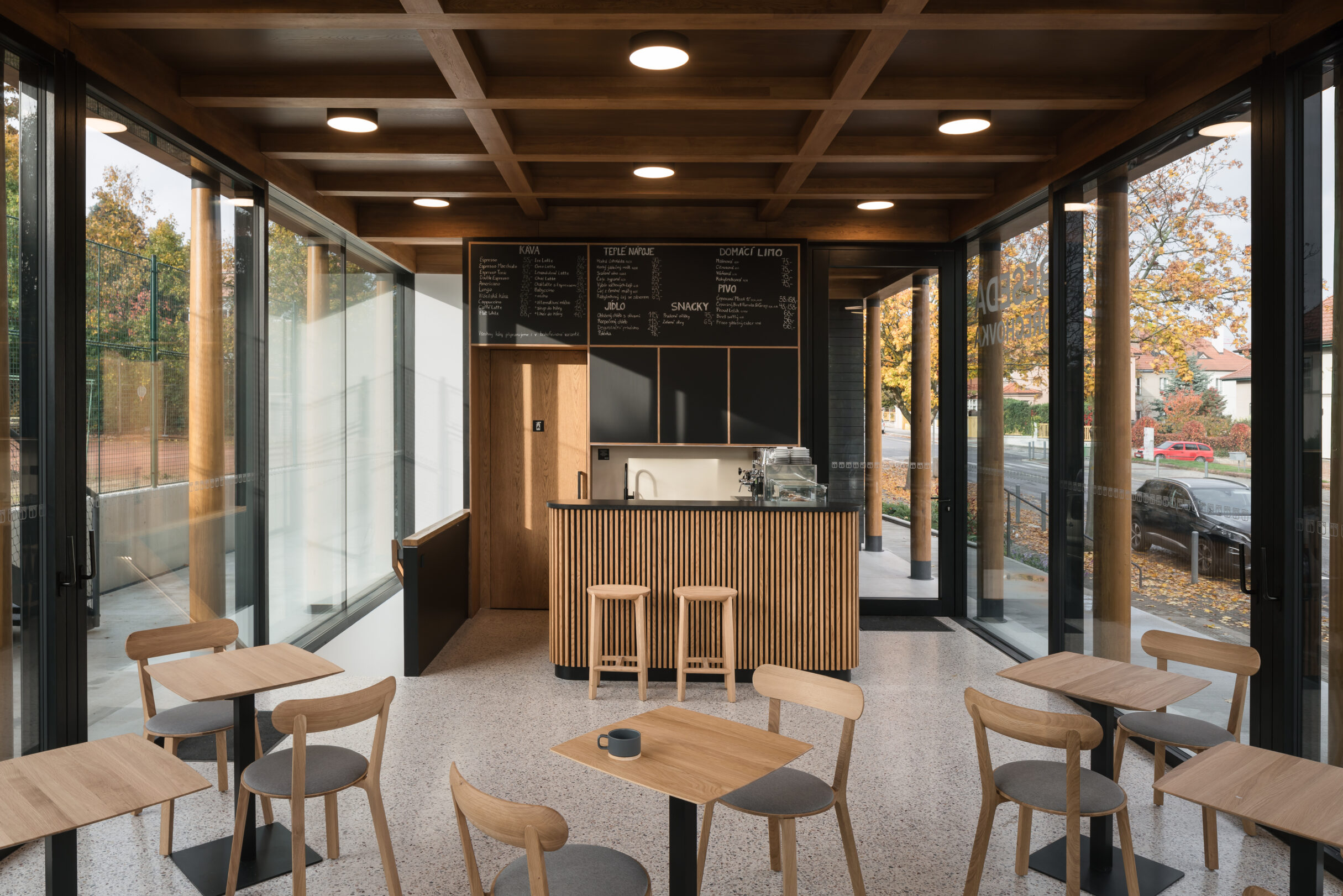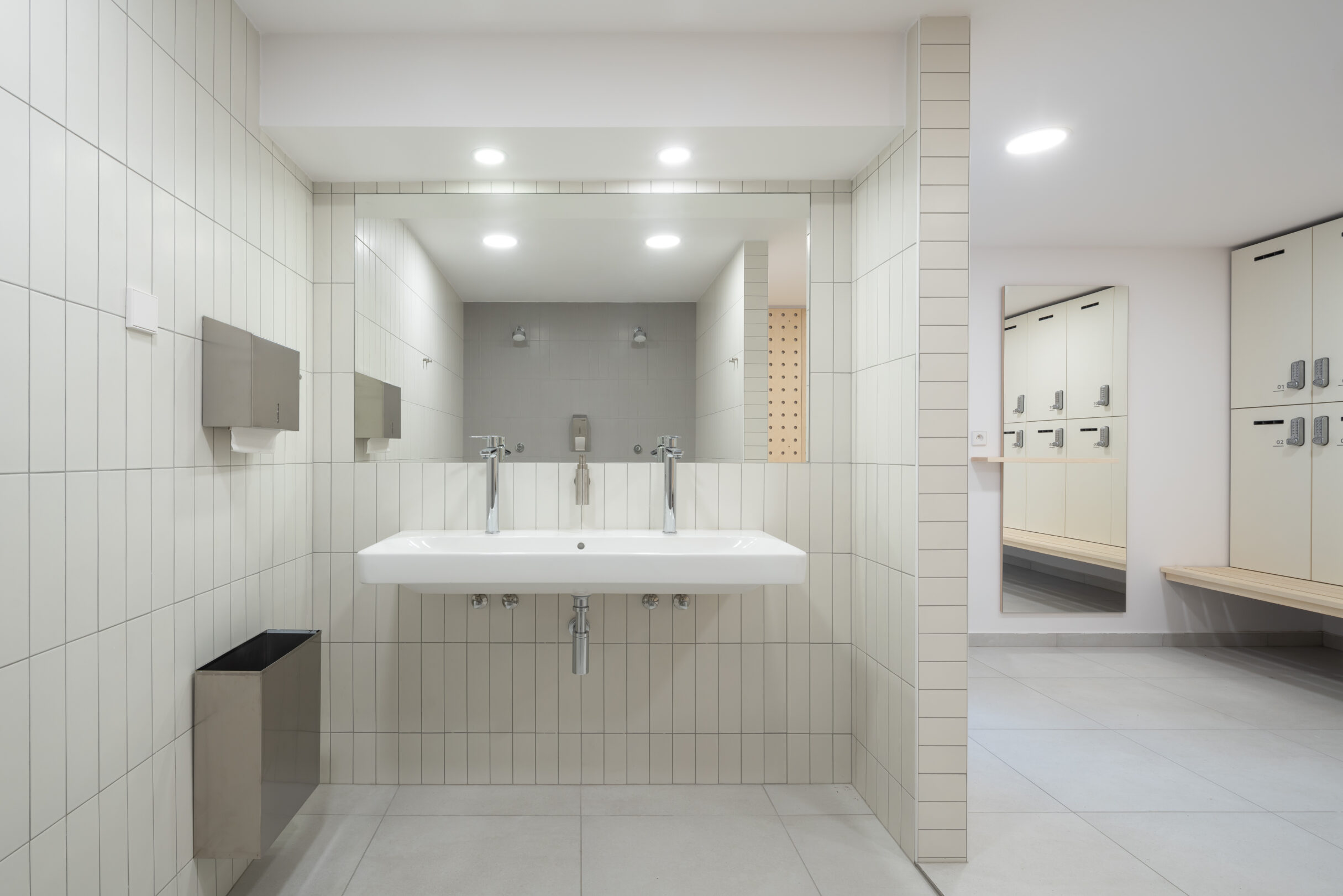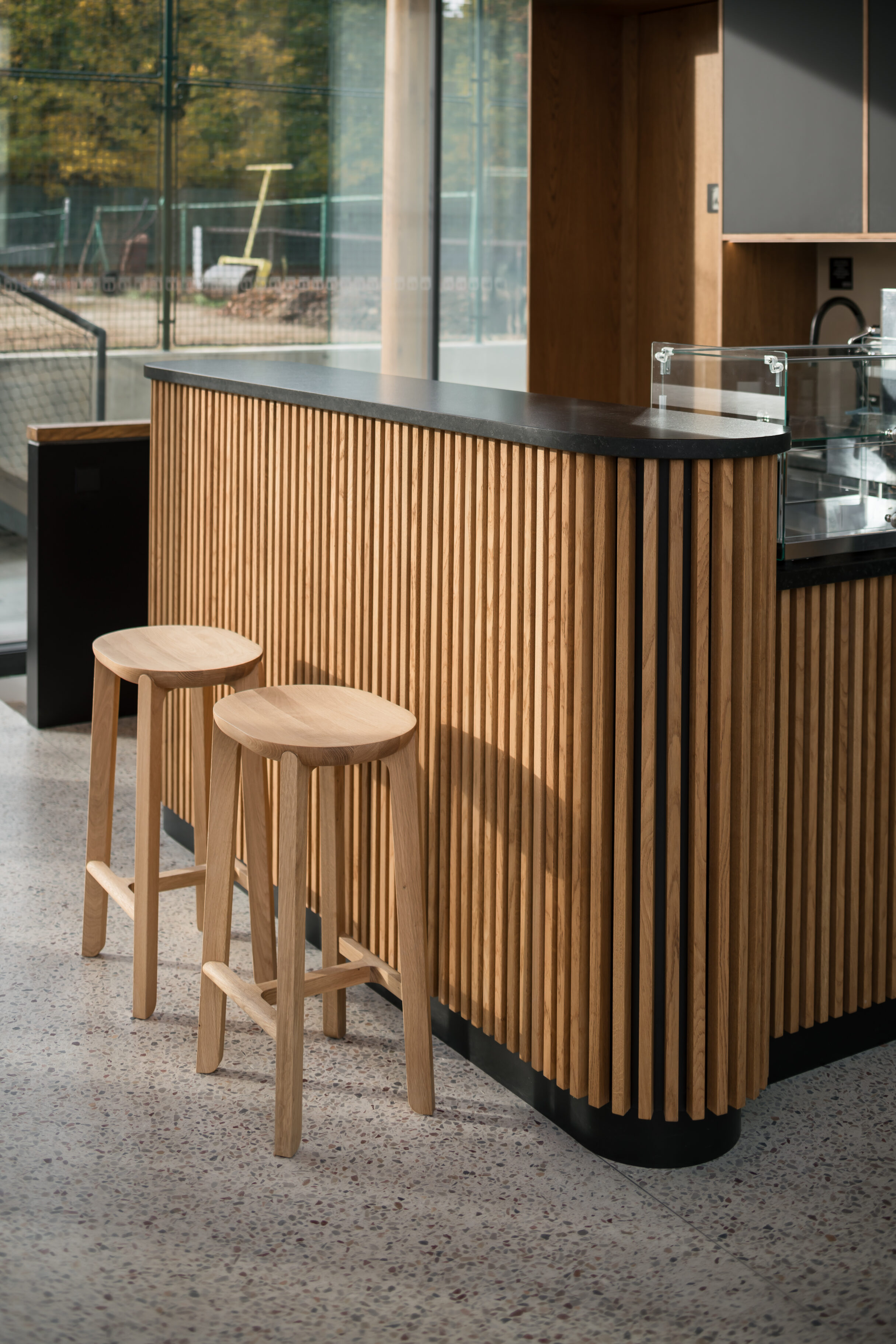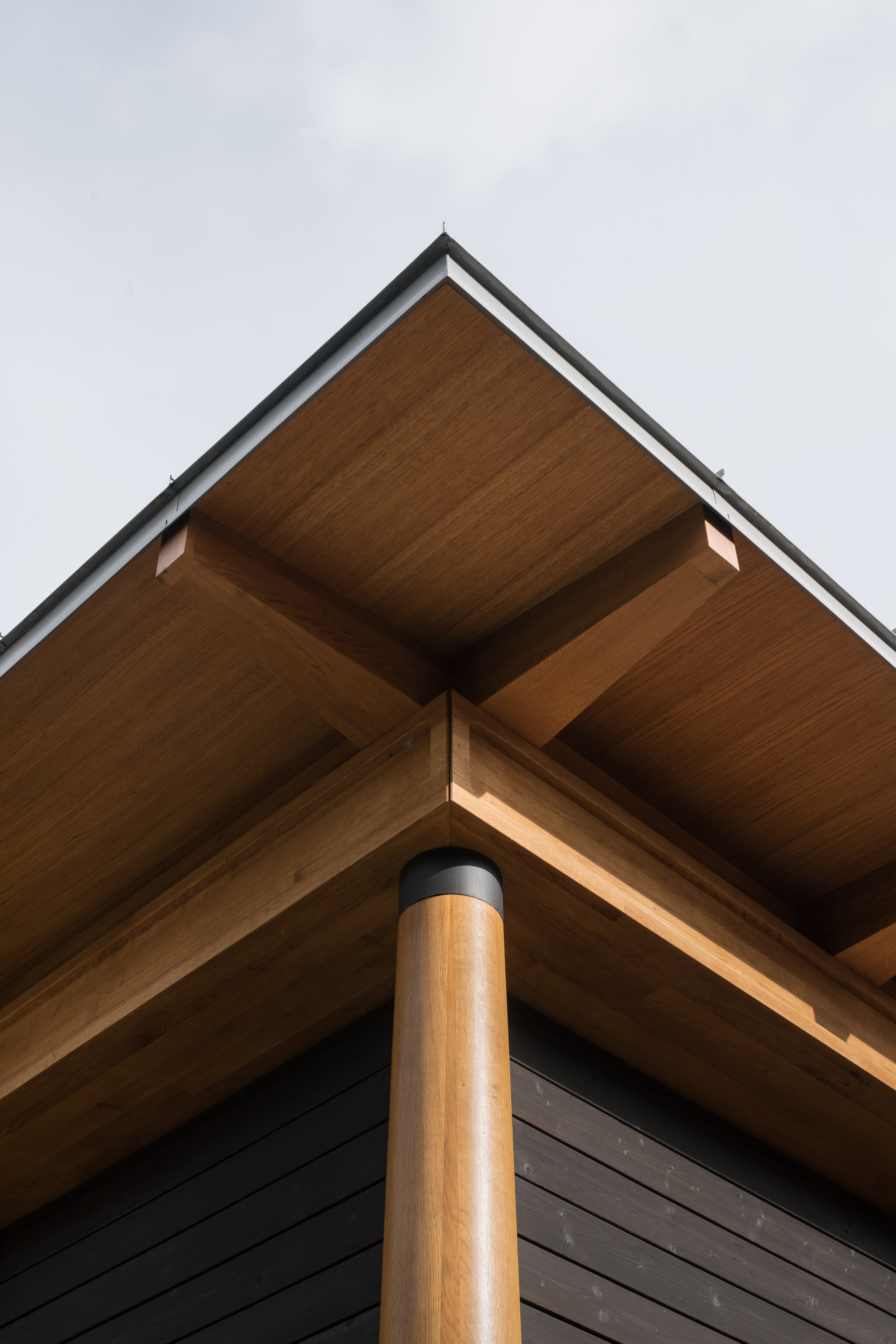Tennis Club in Prague (Beseda Ořechovka)
The building of the tennis club is located in the northern part of Macharovo náměstí, in the very center of the Prague residential district of Ořechovka. Already in the 1920s, when the construction of this colony began in the spirit of the garden city theory, the square was considered to be the social, business and relaxation center of the district. The site of today’s tennis courts was originally intended for a school.
Ořechovka has its structure based on clear geometry. The main compositional element is the north-south axis starting from Spojená Street and culminating at the monument to the victims of WW1. The axis intersects the existing Municipal house (No. 250) and the park block with tennis courts. The greatest energy and movement are concentrated in the foyer of the Municipal house (No. 250) in Na Ořechovce Street. There are shops, restaurants and a sufficient number of parking spaces, which allow a short stop for quick grocery, bakery or florist shopping.
| Authors: | Pavel Hnilička, Petr Bočan |
| Main engineer: | Martin Jirsa |
| Client: | City of Prague (Prague 6 district) |
| Gross floor area: | 242 sq m |
| Built-up area: | 130 sq m |
| Enclosed area: | 883 m³ |
| Usable surface: | 168 sq m |
| Project: | 2020 |
| Realization: | 3Q/2024 |
The pavilion of the tennis club in placed in the park area, along the existing sidewalk, in direct connection with the existing tennis courts. The club building is connected to the street by the main entrance, located in the axis of Macharovo náměstí, with a glazed part of the clubhouse and a monumental staircase, which can also be used for sitting with a view of the liveliest part of the street area. In the western part of the building there is a technical background of the club and a PREDi distribution transformer station integrated into the building.
The building of the club is located freely in a public space. From the south side, the club building is connected to the existing tennis courts. The courts are separated from the club building by security fencing (in the current position).
The building has a character of a low, longitudinal pavilion located about 1.0 to 1.5 meters above street level, which builds on the existing level of tennis courts on the other side. The terrain break from the street is leveled by a landscaped slope and an exterior staircase, which is directly in the north-south axis of Macharovo Square.
On the roof of the building there is a viewing terrace - with a deck made of solid planks and a steel railing made of stainless steel nets. The roof is flat, with internal gutters, designed with extensive vegetation.
The tennis club is a partially basement, single-storey new building with a roof observation deck, connected to the existing tennis courts on Macharovo Square. The building includes a club room, designed for meeting and spending free time of athletes, as well as changing rooms, toilets, operating facilities, storage facilities and a built-in distribution transformer station. The building also includes a public toilet for people with reduced mobility.
The layout of the pavilion is divided into two parts - the western part of the building is technical and service - that is not heated and includes warehouses for sports equipment and clay, access to the roof observation deck and the transformer station room. The eastern part of the building is heated and partially basement. There is a glass club room with about 20 seats, with operating facilities and direct access to the outdoor terrace and towards the courts. In the basement there are changing rooms for athletes and toilets for the club.
The pavilion honors the expressive character of the First Republic architectural style and uses classical architectural elements such as the plinth, the column order and the translation with the cornice. Emphasizes craftsmanship and tectonics of construction. The individual construction elements are visible, but overall they have an airy impression and harmonize with the park environment of Macharovo square. Its expression evokes spa gazebos and colonnades associated with relaxation and encourages public to stop.
The main building material of the above-ground part is hardwood (oak). The supporting system of the pavilion consists of columns with a circular cross-section with entasis, massive lintels decorated with reliefs and transverse rafters sloping at the ends in two directions - this achieves visual relief of the roof structure. The emphasis is placed on quality, longevity and craftsmanship of materials.
The club room is mostly glazed, open on three sides - to the courts, to the terrace and towards the street. The construction of the shop windows consists of subtle metal frames with sliding and revolving doors. The floor of the club is designed from cast terrazzo. The ceiling is formed by a wooden coffered ceiling. The cladding of the full parts of the façade is solved with wide floorboards with joints. The plinth on which the structure is erected is designed from concrete - visible parts made of exposed concrete, or stone-worked.
The ground floor also has a public toilet, designed for people with reduced mobility. This toilet is accessible separately from the outdoor area and can be operated independently of the club
The changing rooms are equipped with lockers for ordinary mechanical keys. The capacity of the locker rooms is expected to be approximately 2 x 20 lockers.
The building is designed for a year-round operation and for possible future year-round use of tennis courts (inflatable hall, etc.). Operationally, the proposal assumes 1-2 employees who will ensure the operation of the club - ie booking and rental of sports fields and sporting goods, maintenance of courts and clubs and additional sales.
At the counter, in addition to securing reservations and lending keys, we also expect additional sales of hot and cold drinks and packaged durable food, including frozen goods.
On the roof of the building there is a viewing terrace - with a deck made of solid planks and a steel railing made of stainless steel nets. The roof is flat, with internal gutters, designed with extensive vegetation. The Terrace has a special lockable entrance from the area from the tennis courts and only occasional operation is expected, eg during tournaments, etc. Access to the terrace is provided by a spiral steel staircase.
